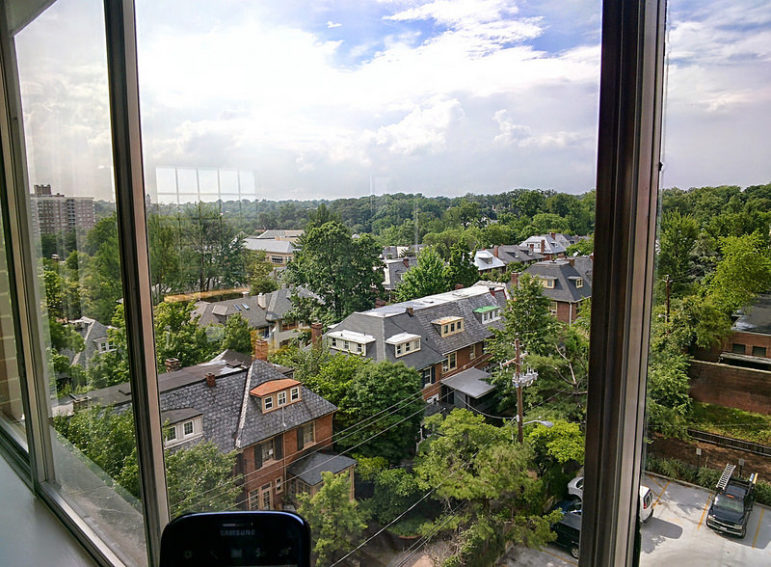
July 26, 2016; WBFF-TV (Baltimore, MD)
Johns Hopkins University (JHU) is upping the gentrification ante by offering incentives for university employees to purchase housing in the surrounding East Baltimore communities. The new plan, described in “Johns Hopkins offers employees incentive to purchase homes close to work,” introduces a plan offering cash incentives for JHU employees who purchase homes in the Eager Park redevelopment area adjacent to the University. The developers (including JHU) envision the new community as an economic development project designed to benefit the entire community.
Wait, say existing residents who worked with the developers in the planning for the area. Advocates claim that the developers did not fulfill commitments to the 290 existing homeowners who were displaced to make way for the new homes. Community activist Donald Gresham said, “We know that people were bamboozled, that they could return because of something called a ‘Right of Return’ policy. You have to understand that if your salary didn’t change, what are you going to be able to return to?”
East Baltimore has long provided rental housing to JHU students (and some employees) in other close-by neighborhoods where JHU constituents coexist in rental housing with racially and income diverse traditional residents. Student and employee rents often support individual entrepreneurs (“urban pioneers”) who invest in and rehabilitate row houses for the newcomers. Because many of these homes were already vacant, there’s been little displacement. It has been a kind of “gentle gentrification.” Eager Park is a different kind of gentrification where a public-private partnership has created a new community for middle- and upper-income families.
The problem of university and hospital expansion into adjacent urban neighborhoods is a familiar story in communities around the country. At the same time as JHU is subsidizing employee purchases in their “investment” development, residents of Buffalo, New York’s Fruit Belt neighborhood are pushing back against the gentrifying influence of Buffalo Niagara Medical Campus. Oscar Perry Abello’s story “Buffalo Neighborhood Takes Control of Fight Against Displacement” opens with a profile of community activist India B. Walton and her “Rosa Parks moment” when she created a “Residents Only” parking zone using only a roll of caution tape and a lot of chutzpah.
Sign up for our free newsletters
Subscribe to NPQ's newsletters to have our top stories delivered directly to your inbox.
By signing up, you agree to our privacy policy and terms of use, and to receive messages from NPQ and our partners.
Rather than engaging the Buffalo Niagara Medical Campus in a discussion of their plans, the Fruit Belt neighborhood is pushing Buffalo City Council to create a neighborhood land trust for vacant city-owned land. Having a nonprofit land trust can permit residents to negotiate from a position of strength as de facto property owners.
In his story, Mr. Abello explains, “A community land trust would give the community negotiating power to work with developers and ensure existing residents will have options to stay in the community.” Mr. Abello quotes Annette Lott, president of Fruit Belt United, explaining that, “If we control the process of who purchases those lots, we will be able to control rents, we will have development without displacement of our residents.”
Keeping the larger community informed and sympathetic has been a hallmark of the Fruit Belt community’s strategy to get some control over future development. “Members of the public are invited to a meeting at the Moot Center on August 10th at 5:00 p.m. to learn more about the land trust.”
Relationships between universities and hospitals and their surrounding residential communities don’t need to be adversarial. Pittsburgh provides a model for how a hospital conversion foundation is fostering a kind of “gentle gentrification” for residents in Pittsburgh’s South Side neighborhood.—Spencer Wells













